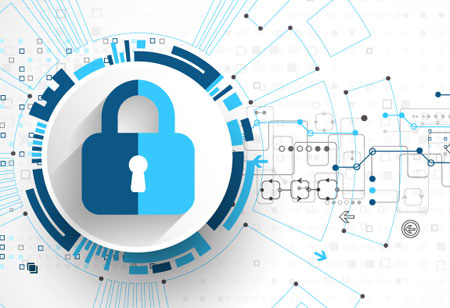THANK YOU FOR SUBSCRIBING
AI and the Future of Cybersecurity in an Evolving Threat Landscape
Adopting a proactive, AI-driven cybersecurity strategy with threat intelligence, continuous monitoring, and Zero Trust Architecture is essential to safeguard organizations against evolving cyber threats.

By
Apac CIOOutlook | Thursday, January 09, 2025
Stay ahead of the industry with exclusive feature stories on the top companies, expert insights and the latest news delivered straight to your inbox. Subscribe today.
Adopting a proactive, AI-driven cybersecurity strategy with threat intelligence, continuous monitoring, and Zero Trust Architecture is essential to safeguard organizations against evolving cyber threats.
FREMONT CA: The rapid evolution of technology has given rise to a cybersecurity landscape where sophisticated and ever-changing threats increasingly challenge traditional security measures. Artificial intelligence (AI) is emerging as a pivotal force in shaping the future of cybersecurity as cyberattacks become more advanced and frequent. AI's ability to analyze vast amounts of data, detect anomalies, and predict potential threats in real time offers a remarkable defense against malicious actors. In this evolving threat landscape, AI-driven solutions enhance detection and response capabilities and enable proactive risk management and adaptive security strategies.
The Need for a Proactive Security Strategy
In today's ever-evolving threat landscape, businesses increasingly recognize the importance of adopting a proactive approach to cybersecurity. A key aspect of this proactive stance involves leveraging Threat Intelligence and Monitoring. Through threat intelligence, organizations gain valuable insights into cyber attackers' tactics, techniques, and procedures. This knowledge enables businesses to anticipate potential threats and devise strategies to mitigate them before they escalate. Continuous monitoring further strengthens this approach, allowing for the early detection of unusual activities and enabling swift responses to potential incidents.
Incident Response and Planning
A well-defined incident response plan is an essential component of a comprehensive security strategy. With a reliable response framework, organizations are better prepared to react swiftly and effectively in the event of an attack, limiting both the damage caused and the recovery time required. As the complexity and distribution of IT environments continue to grow, the adoption of Zero Trust Architecture (ZTA) is gaining prominence. Operating on the principle of "never trust, always verify," ZTA ensures that access to network resources is only granted after stringent authentication and continuous validation. This approach significantly reduces the risk of unauthorized access and lateral movement within the network, effectively slowing attackers even if they breach the perimeter.
The Role of AI in Cybersecurity
Advanced AI and machine learning (ML) algorithms can analyze vast amounts of data in real time, identifying patterns and anomalies that may indicate a security breach. This capacity for quick analysis enhances threat detection and facilitates the automation of routine cybersecurity tasks, such as identifying and responding to potential threats. By automating these tasks, AI frees cybersecurity experts to focus on more complex and critical challenges. For example, AI-powered systems can proactively identify and block phishing emails before they reach an employee's inbox, thereby minimizing risks. Machine learning models further contribute by analyzing historical data and detecting emerging trends that could indicate vulnerabilities.
Building a Comprehensive Security Framework
To protect against a wide range of cyber threats, organizations must implement a comprehensive security framework that secures every aspect of their digital infrastructure, from the outermost layers of the network to the most sensitive internal data. This approach includes reinforcing perimeter security with firewalls, intrusion detection, and prevention systems to limit unauthorized access from external sources. It also ensures that security is integrated into every application, addressing vulnerabilities through code integrity, secure configurations, and regular updates. Data security is prioritized by implementing encryption, data loss prevention strategies, and strict access controls to safeguard sensitive information.
Ongoing threat management is crucial, involving continuous identification, analysis, and mitigation of potential threats using human expertise and automated tools to guarantee timely and accurate responses. Access to systems and data is carefully filtered according to the principle of least privilege, ensuring that it is restricted based on job roles and responsibilities. Additionally, endpoint security is key to protecting devices like laptops, smartphones, and tablets, often the first point of entry for attackers, through endpoint detection and response tools, antivirus software, and secure configurations.
A reactive approach to security is no longer sufficient to protect against the ever-growing and increasingly sophisticated cyber threats. A company's growth strategy must integrate cybersecurity into the core to sustain itself in the digital age. By implementing a proactive, layered defense strategy that spans threat intelligence, AI-powered responses, and comprehensive security practices, businesses can better protect themselves and approach digital transformation with greater confidence and resilience.





